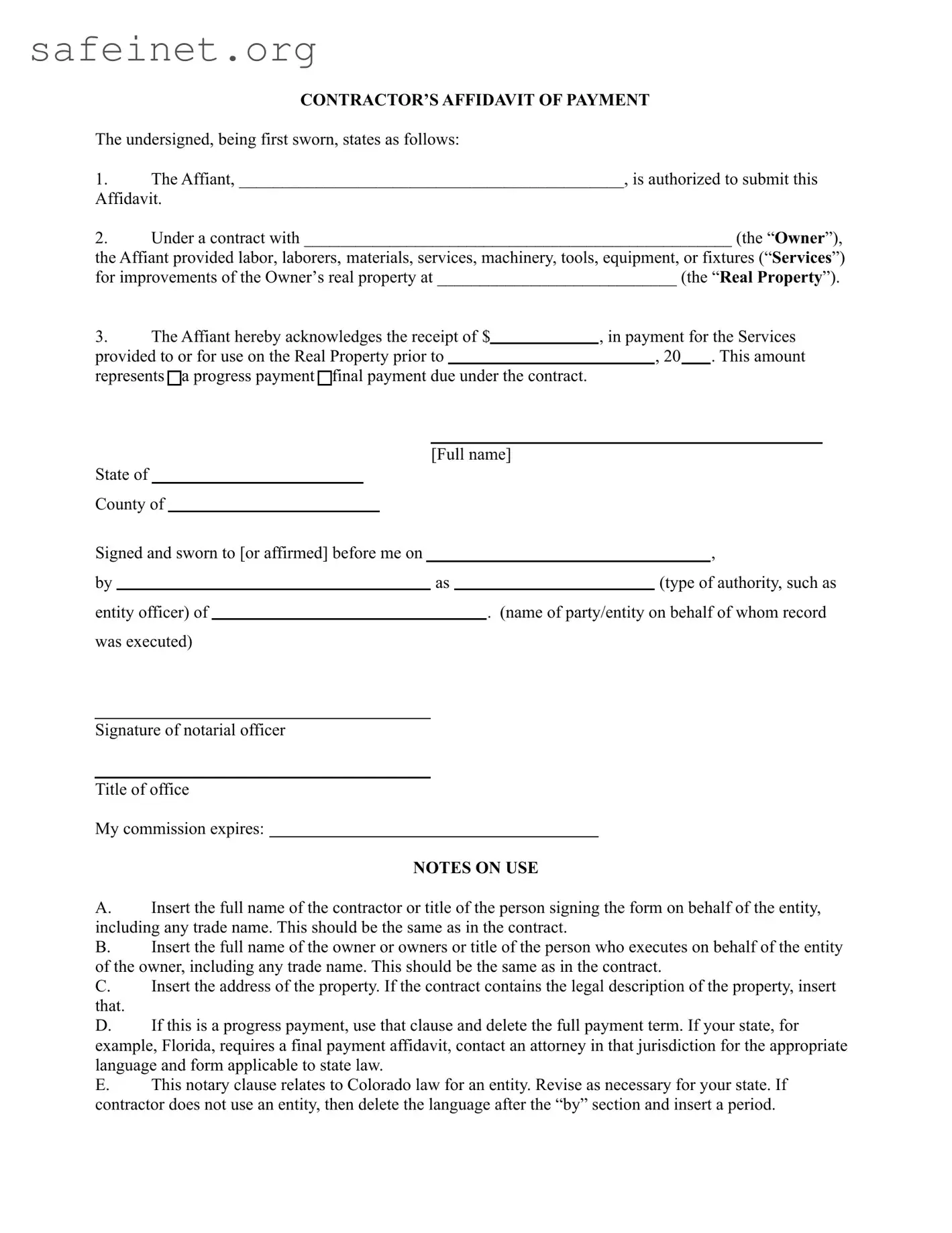What is a Contractor Affidavit Form?
The Contractor Affidavit Form is a legal document that contractors use to confirm that they have been paid for services related to a construction project. It serves as a declaration that all parties involved have met their payment obligations under a contract.
Who needs to fill out the Contractor Affidavit Form?
This form must be filled out by contractors or authorized representatives of companies involved in construction projects. It is typically used when contractors are requesting payment or confirming payment has been received for their services.
What information is required on the form?
Key information includes the contractor's name, the owner's name, the address of the property where the services were provided, and the amount of payment received. Additionally, the form should indicate whether the payment is partial or final.
Is a notary signature required for the Contractor Affidavit Form?
Yes, the form must be signed in front of a notary public. This adds an extra layer of verification and legality to the affidavit, indicating that the signer has been sworn and can be held accountable for the information provided.
What does "progress payment" mean in this context?
A progress payment refers to a partial payment received by a contractor for work completed to date. If the payment listed is a progress payment, certain parts of the form related to final payment should be modified accordingly.
What happens if the information provided is incorrect?
If inaccuracies are found, it could lead to disputes over payment. It's crucial to ensure all details, such as names and amounts, are filled out correctly before submitting the form.
Can the Contractor Affidavit Form vary by state?
Yes, the requirements for the form can change depending on local laws. If necessary, contractors should consult with an attorney familiar with construction law in their specific state to ensure compliance.
When should the Contractor Affidavit Form be submitted?
The form should typically be submitted at the time of requesting payment or upon completing the work specified in the contract. Keeping it timely helps avoid potential disputes over payments.
What is a "final payment" on the form?
A final payment signifies that all services specified in the contract have been completed, and the contractor is seeking the last payment. It is important to clarify on the form whether the payment being received is final or a progress payment.
Can the Contractor Affidavit Form be used for different types of construction projects?
Yes, the form is versatile and can be adapted for residential, commercial, or industrial construction projects. However, ensure that all requirements specific to the project type and location are followed.

